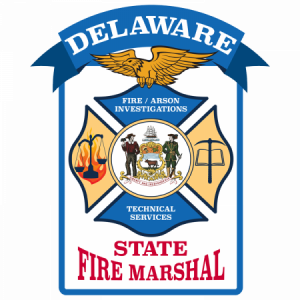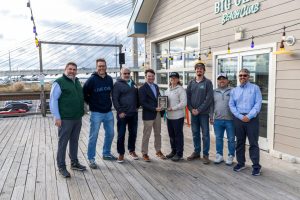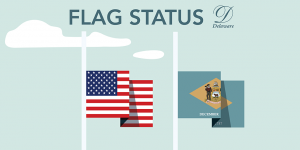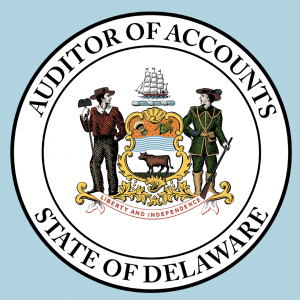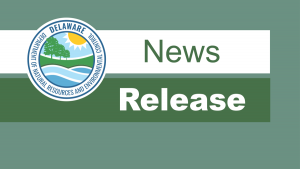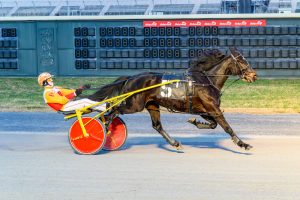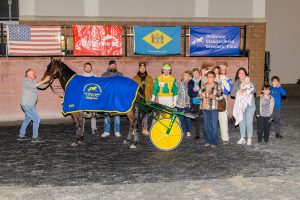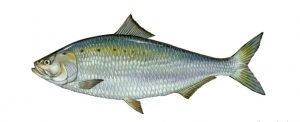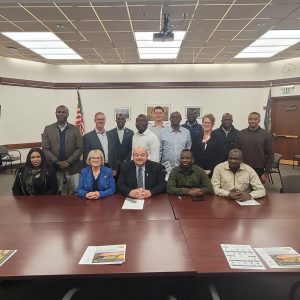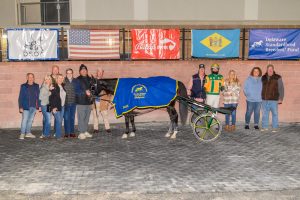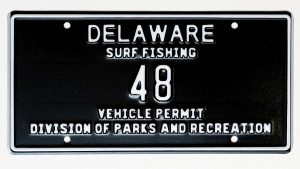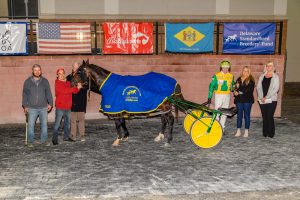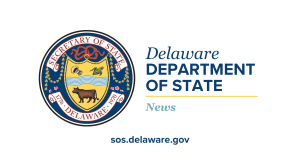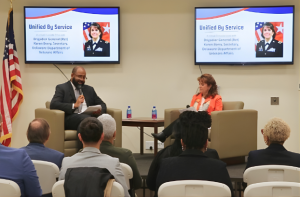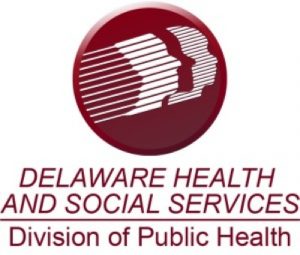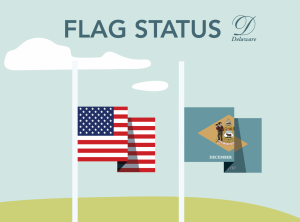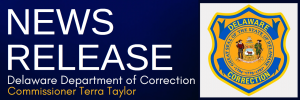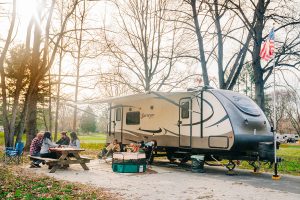Grants support adding nearly 750 acres added to Ted Harvey Conservation Area, protection and restoration of nearly 2,000 acres of wetlands and associated uplands
Bowers Beach, DE– Among the lush fields and tidal marshland of Delaware’s Bayshore east of Dover, U.S. Senator Chris Coons, U.S. Congressman John Carney, DNREC Secretary Collin O’Mara, Department of Agriculture Secretary Ed Kee and other Delaware officials and conservation partners were joined by U.S. Fish and Wildlife Deputy Director Steve Guertin to celebrate the purchase, protection and conservation of the Vance Morris Tract – nearly 750 acres of key coastal Bayshore lands bordering the Ted Harvey Conservation Area. Today’s event also highlighted the protection and restoration of more than 2,000 acres of wetlands and uplands on private property and public access areas statewide through the “Delaware’s Declining Wetlands Habitats” project. Both announcements were made possible by two $1 million grants to Delaware through the U.S. Fish and Wildlife Service’s North American Wetlands Conservation Act (NAWCA) and more than $4 million in public and private matching funds.
“By conserving these lands and providing access to this very special place along the Bayshore, we will support our historic Bay communities and create new opportunities for ecotourism within the Delaware Bayshore,” said Delaware Governor Jack Markell. “Expanding the Ted Harvey Conservation Area to include the Morris Tract helps increase protection of our natural resources for the enjoyment of current and future generations. We are grateful for the Morris family’s conservation spirit and the many partners who rallied resources to make these important land protection projects possible.”
“Delaware’s Bayshore is a precious environmental resource and it is vital that we act as good stewards to protect and preserve these important areas for generations to come. Adding the 747-acre Vance Morris Tract is another step in that direction,” said Senator Tom Carper. “We must strike a balance between economic development and environmental protection for Delaware’s coast, and I hope this approach that has worked in Delaware can be a model for other coastal states.”
“Delaware’s wetlands are a source of great pride in our state and it’s important that we protect them for future generations to enjoy,” Senator Chris Coons said. “With this federal grant, DNREC and its partners like the Mt. Cuba Center, The Nature Conservancy, Ducks Unlimited, Delaware Wild Lands, Delaware Community Foundation, the Delmarva Ornithological Society, and many other partners have significantly advanced the Delaware Bayshore Initiative. The Morris Farm and the most recent NAWCA award will link some of the most beautiful pieces of coastal Delaware, and will protect wildlife habitat for outdoor enthusiasts.”
“The Delaware Bayshore is a unique and beautiful natural resource that our state is blessed to have,” said Congressman John Carney. “Adding the Morris Tract not only brings more eco-tourism opportunities to the state, but preserves the marshes, forests, and wetlands that are home to many species of birds and wildlife. This is the type of investment that will pay off for many years to come.”
“Because no single public or private entity can conserve our great outdoors alone, one of the most powerful tools for conservation is the North American Wetlands Conservation Act, or NAWCA,” said Steve Guertin, Deputy Director of the U.S. Fish and Wildlife Service. “NAWCA has provided $1.3 billion since 1990 to protect 27 million acres of wetlands in the U.S., Mexico and Canada, and partners have given another $2.7 billion in matching non-Federal funds. Today, we celebrate the success of this investment in ensuring an ecologically healthy and economically vibrant future for Delaware’s Bayshore and beyond.”
Since the passage of the North American Wetlands Conservation Act (NAWCA) in 1989, the Migratory Bird Conservation Commission has approved 13 grants under the act totaling $10 million for projects in Delaware. Agencies, organizations and private landowners have contributed more than $21 million in matching funds towards these projects which will ultimately protect more than 10,800 acres of wetlands and other significant migratory bird habitats.
“These North American Wetlands Conservation Act grants are a great example of how groups across Delaware are coming together to help enhance Delaware’s Bayshore as a world-class conservation and recreational area,” said DNREC Secretary Collin O’Mara. “By leveraging federal, state, local and private resources to meet the goals of the Delaware Bayshore Initiative, we are connecting wildlife areas and enhancing public recreational access to our precious natural resources, as well as advancing key conservation goals for the Bayshore region and throughout the state.”
The Vance Morris Tract: A landmark addition to the Delaware Bayshore
Conservation of the 747-acre Vance Morris Tract, identified as a key priority in DNREC’s Delaware Bayshore Initiative, will protect coastal wetlands and wildlife habitat and expand public access and wildlife-associated recreational opportunities within the Bayshore region. As part of the Ted Harvey Conservation Area, located southeast of Dover bordering the Delaware Bay, the new tract will provide outdoor enthusiasts with opportunities for waterfowl, deer and upland game hunting, fishing, birding, wildlife watching, photography, and nature study activities, as well as shoreline area for kayakers and canoeists to take a break from paddling the St. Jones River.
Acquisition of the Morris Tract permanently protects lands including 315 acres of wetlands, 388 acres of farmland and 38 acres of upland forest. The tract connects more than 4,000 acres of protected public and private lands around the St. Jones River, including Ted Harvey Conservation Area, St. Jones Reserve, and the John Dickinson Plantation. The property expands the boundaries of Ted Harvey to a total of 3,385 acres of coastal wetlands, fields and forest. Its acquisition also closes a gap in protected Bayshore lands, which now encompass a total of more than 115,000 acres of public and private lands, including farmland, from New Castle to Lewes.
The coastal salt marshes on the tract provide important foraging and resting habitats for waterfowl, as well as breeding habitat for rails, saltmarsh sparrows and seaside sparrows. Red knots, a species of significant concern in Delaware as well as throughout the Atlantic Flyway, feed along adjacent beaches and will benefit from additional protected habitat. The new tract also contains wetlands and croplands that provide valuable foraging habitat for migrating and wintering waterfowl, such as Canada geese and American black duck, as well as forest shelter for migratory songbirds in spring and fall.
Landowners Vance Morris and Bill Morris were recognized by the gathering for their long-standing commitment to conservation and for choosing to preserve their land as a new wildlife area tract that will be named for their father, Vance Morris (1919-1986), a lifelong outdoorsman, charter boat business owner out of nearby Bowers Beach and nationally-competitive professional retriever trainer.
The elder Vance Morris purchased the property in 1964, and raised his family on Delaware’s great outdoor traditions – hunting, fishing, boating, and enjoying life along the Bayshore. After five decades of stewardship through three generations, the Morris family decided to ensure the property’s permanent conservation as part of the Ted Harvey Conservation Area.
“We decided it was fitting for a number of reasons – the importance of preserving wetlands, the conservation of open space, and the traditions it encompasses,” Bill Morris said. “This farm has meant a lot to my family, and this is our way of ensuring it continues.”
“The preservation and acquisition of the Morris farm is truly a great Delaware story,” said Delaware Secretary of Agriculture Ed Kee. “I first met [the younger] Vance Morris in 1971 when we were both studying agriculture at the University of Delaware. A few years later, when I was the Kent County Agricultural Agent for the University’s Cooperative Extension Service, I worked with the Morris family on various crop and farming issues. Vance, Bill and their parents were great supporters of agriculture and helped tremendously by supporting our agricultural educational tours for farmers. The Morris family have been wonderful citizens of Kent County and Delaware. Their interest in nature, farming and our quality of life continues with the Morris Tract being a part of Delaware’s natural resource, wildlife and farming heritage. We owe a great debt of gratitude to the family.”
The NAWCA grant used to purchase the Morris Tract was paired with matching funds totaling approximately $2.2 million from Delaware’s Open Space Program and public/private contributions. More than $172,000 was given by conservation partners and private donors. Major donors include the Mt. Cuba Center and the Delaware Chapter of the Nature Conservancy; Ducks Unlimited; Delmarva Ornithological Society’s Bird-A-Thon funding; and the Delaware Community Foundation and Delaware Wild Lands. Other donors were DuPont; the Town of Bowers Beach; Delaware Greenways; and the Kent County Conservancy.
“Not only is this a prime piece of the Delaware Bayshore, with functioning marsh lands and upland habitat; it’s also a critical part of the whole Delaware River and Bay ecosystem, which The Nature Conservancy works across four State Chapters to protect,” said Richard Jones, Delaware State Director of The Nature Conservancy. “It is exciting to see private funding from Mt. Cuba Center align with State Open Space and NAWCA funding on such a high-priority conservation project.”
“Mt. Cuba Center is excited to be a part of such an important land conservation initiative, especially because of the collaborative effort among federal, state and local partners,” said Ann Rose, president of the Mt. Cuba Center’s Board of Managers.
“Almost 50 years ago, Delaware Wild Lands purchased 2,000 acres of land now known as the Ted Harvey Conservation Area,” said Kate Hackett, executive director of Delaware Wild Lands. “Delaware Wild Lands is proud to continue this keystone investment and be a part of public-private partnerships like this, that successfully pool multiple funding sources to achieve tangible conservation results for Delaware. Together we are making great strides in preserving, protecting, and restoring Delaware’s iconic beauty, characteristic natural resources, and vital working landscapes.”
“Dedicated DOS members raise funds from friends, relatives and local businesses to protect Bayshore habitat through our annual Delaware Bird-a-Thon fundraiser, which has generated nearly a quarter million dollars and helped protect over 1,100 acres since 2007,” said Delmarva Ornithological Society Conservation Chair Matt Sarver. “We are proud to contribute a portion of this grassroots funding as a match for federal funds to purchase this exceptional property. The existing marsh at the Morris Tract is superb habitat, but perhaps more importantly, this acquisition creates opportunities for ecological restoration that will facilitate coastal adaptation to future sea level rise, ensuring that the birds of our coastal habitats will persist for future generations.”
A portion of the Morris Tract also falls within lands recognized as part of the Delaware National Estuarine Research Reserve (DNERR) at its Kent County component, the St. Jones Reserve, which adjoins the Ted Harvey Conservation Area. Established in 1993 as a cooperative program between the State of Delaware and the National Oceanic and Atmospheric Administration, DNERR is one of 28 national estuarine research reserves across the country whose goal is to establish, protect, and manage natural estuarine habitats for research, education, and coastal stewardship.
Delaware’s Declining Wetlands Habitats Grant
U.S. Fish and Wildlife Service Deputy Director Steve Guertin also announced today that conservation partner Ducks Unlimited has been awarded a $1 million NAWCA grant to protect and/or restore more than 2,000 acres of Delaware’s declining wetland habitat types on private property and public access areas.
The “Delaware’s Declining Wetlands Habitats” grant was selected for funding as part of $61.3 million recently approved by the Migratory Bird Conservation Commission to protect, restore and enhance more than 205,000 acres of North American wetlands and associated uplands. Delaware’s NAWCA grant was awarded to Ducks Unlimited. DU and partners including the Delaware Department of Agriculture, the Shoot & Bull Sportsman Association and Delaware Wild Lands, provided a total of $2 million in matching funds toward Delaware’s grant.
“This commemoration is a great example of how effective conservation groups can be when they work together,” said David Brakhage, director of operations for Ducks Unlimited. “DU has had great success in the past amplifying our own efforts by joining together with like-minded stakeholders. The Delaware Bay is important to waterfowl and to those who enjoy them. We’re committed to further work in this area.”
Several protection, restoration and enhancement projects will be funded by the grant, half of them along the Bayshore, including projects at Bombay Hook National Wildlife Refuge, Ted Harvey Conservation Area and on Milford Neck. The grant also provides funding to purchase multiple conservation easements along the Delaware Bayshore and other areas in the state.
The project area is part of a major migration corridor for waterfowl and other wetland-associated migratory birds on the Atlantic Flyway. Restoration and protection of these habitats will provide migratory stopover and wintering habitat, and breeding and foraging habitat for waterfowl, passerines, shorebirds and other waterbirds. Project activities will reduce the rate of wetland loss and conversion, and address the habitat protection, restoration and enhancement goals of several national and international bird management plans.
About the Delaware Bayshore
Widely recognized for its expansive coastal marshes, bay beaches, and agricultural lands and forests, the Delaware Bayshore provides diverse habitat for more than 400 species of birds and wildlife. In 1992 the Delaware Bay Estuary was designated as a Wetland of International Significance by the Ramsar Convention on Wetlands, because it provides critical resting and feeding areas for migratory shore and wading birds.
The Bayshore region encompasses more than 115,000 acres of protected lands from the City of New Castle south to Cape Henlopen State Park in Lewes. Included within this network of protected lands are seven state wildlife areas – Augustine, Cedar Swamp, Woodland Beach, Little Creek, Ted Harvey, Milford Neck and Prime Hook – plus the St. Jones Reserve, a national estuarine research reserve, and two national wildlife refuges, Bombay Hook near Smyrna and Prime Hook near Milford. Many other acres are protected by private conservation partners and through the Farmland Preservation Program.
The Delaware Bayshore Initiative builds on the state’s longstanding commitment to conserving our coastal zone and on the Delaware Bayshore’s reputation as a unique and beautiful natural resource, worthy of protection. In 2012, the Initiative received national recognition as one of 100 projects included in the U.S. Department of Interior’s America’s Great Outdoors 50-State Report highlighting some of the country’s most promising ways to reconnect Americans to nature. When the Bayshore Initiative was formally launched in May 2012 in Slaughter Beach, then-U.S. Department of the Interior Secretary Ken Salazar called the Delaware Bayshore a “landscape of national significance.”
For more information on the Delaware Bayshore Initiative, click Delaware Bayshore.




